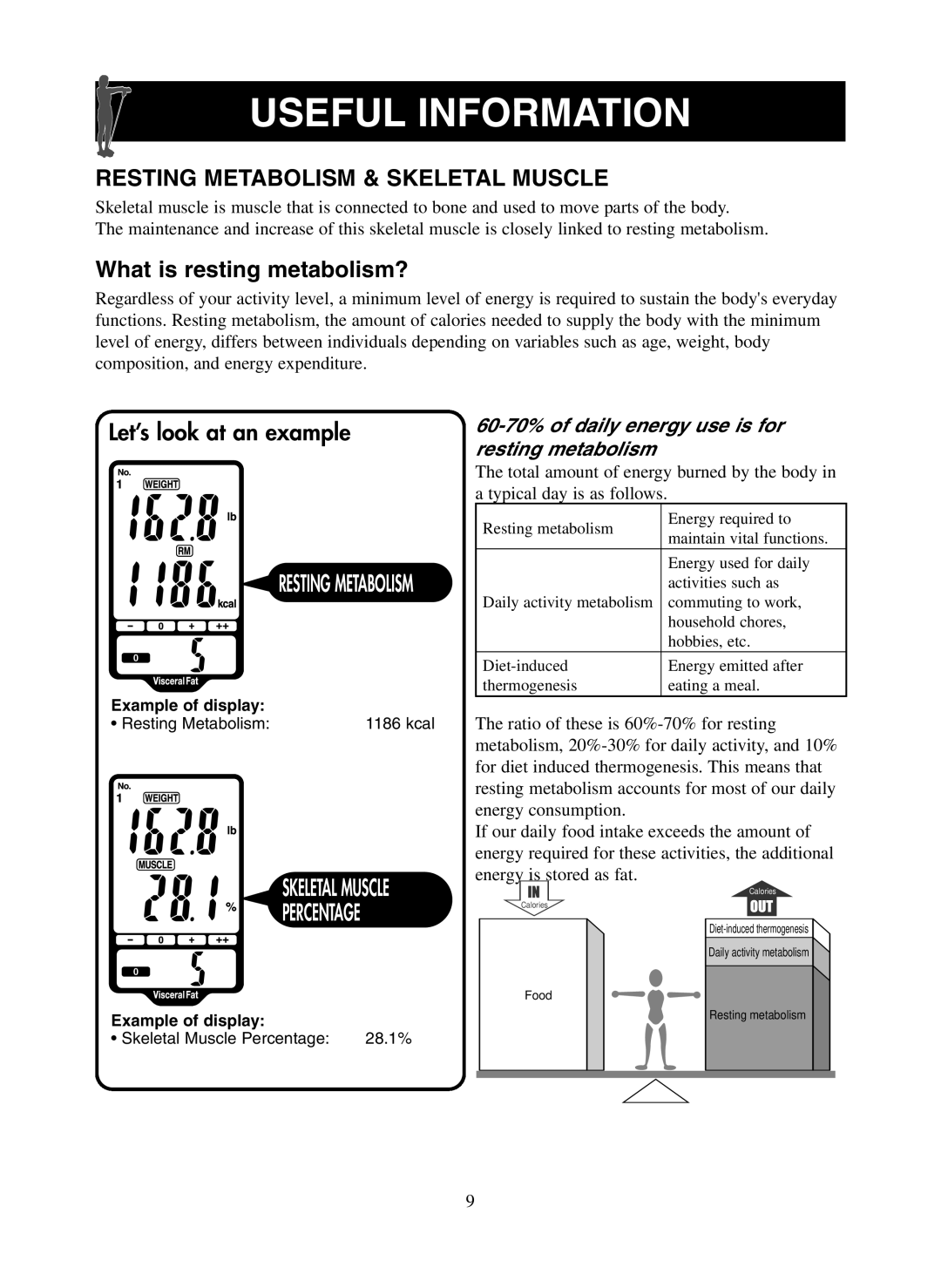
USEFUL INFORMATION
RESTING METABOLISM & SKELETAL MUSCLE
Skeletal muscle is muscle that is connected to bone and used to move parts of the body.
The maintenance and increase of this skeletal muscle is closely linked to resting metabolism.
What is resting metabolism?
Regardless of your activity level, a minimum level of energy is required to sustain the body's everyday functions. Resting metabolism, the amount of calories needed to supply the body with the minimum level of energy, differs between individuals depending on variables such as age, weight, body composition, and energy expenditure.
Let’s look at an example
RESTING METABOLISM
60-70% of daily energy use is for resting metabolism
The total amount of energy burned by the body in a typical day is as follows.
Resting metabolism | Energy required to | |
maintain vital functions. | ||
| ||
| Energy used for daily | |
| activities such as | |
Daily activity metabolism | commuting to work, | |
| household chores, | |
| hobbies, etc. | |
Energy emitted after | ||
thermogenesis | eating a meal. |
Example of display: |
|
• Resting Metabolism: | 1186 kcal |
The ratio of these is
If our daily food intake exceeds the amount of energy required for these activities, the additional energy is stored as fat.
SKELETAL MUSCLE
Calories
Calories
PERCENTAGE
Example of display: |
|
• Skeletal Muscle Percentage: | 28.1% |
| |
| Daily activity metabolism |
Food | Resting metabolism |
|
9
